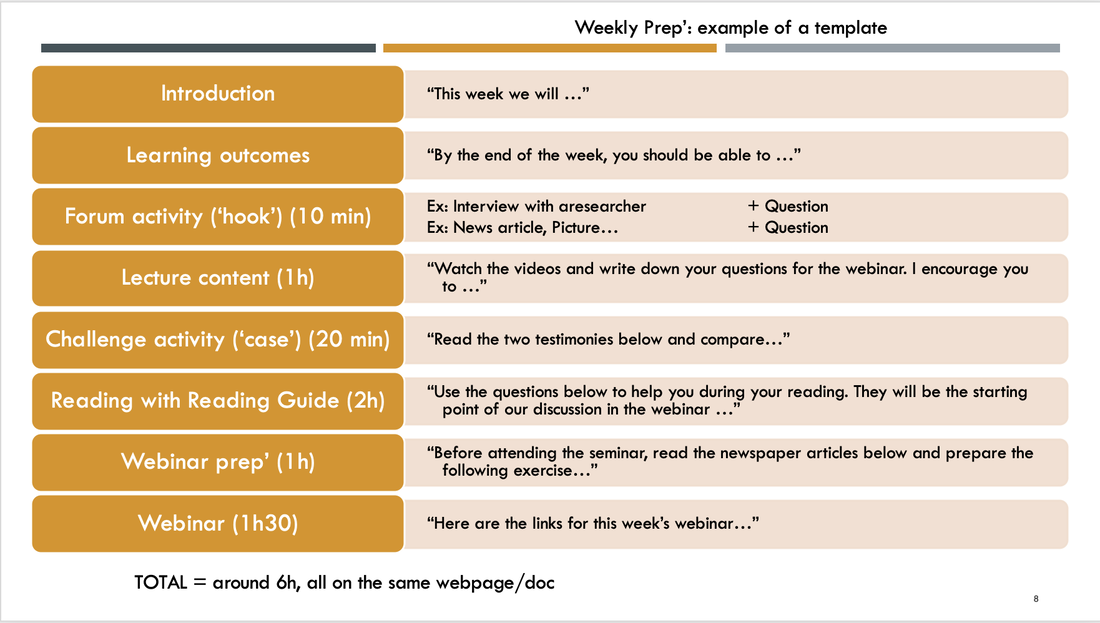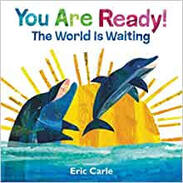 Whether you are a teacher teaching qualitative research methods or a student learning methodology, this blog post aims to help you answer the questions people learning how to code qualitative data always ask:
 When is it a good time to read this blog? (i.e. where does it fit in your learning curve?) = You have learned the basics of coding and you have started coding your material. You are in the process of reading your material over and over again. You have created some codes just to have to rename them the following day. Some of your themes start feeling like codes and some of your codes end up looking like themes. You wonder why you are so slow, what you must have missed, and expect others to be much more ‘efficient’, 'good' and 'quick' than you at doing all this. NOW is the time to read this post! Let me start by telling you something useful right away: a lot of things you think you are doing wrong is just the way the method works! In this blog post, I will give you some keys to understand and explain how the coding process happens in practice. By the end of this post, I hope you will be able to substitute the questions above (that often fuel your frustration and take down our self-esteem) with more constructive questions that will boost the quality of your analysis and help you make the most out of your data. But before going any further, let's define a few important words to make sure we understand each other:
What does coding look like in practice?To set our expectations regarding coding as a research practice, we need to understand what happens when we code:
Coding as a pattern finding activity
You need to engage this double process on a certain amount of data to enable patterns to appear within your data. To put it differently, this means:
Coding as an iterative process Coding is not a linear process with clear cut steps that you take one after the other. Coding is an iterative process. By iterative, I mean a process for arriving at a decision or a desired result by repeating rounds of analysis or cycles of operations. The objective is to get closer to the desired results with each repetition, or rather, with each iteration. To give you an example to illustrate what 'iteration' means, we can turn to how the word iteration is used in computer programming. In computer programming, iteration represents a process wherein a set of instructions or structures are repeated in a sequence a specified number of times or until a condition is met. When the first set of instructions is executed again, it is called an iteration. In the case of coding qualitative data, this means that you keep repeating the process of coding until you meet the criteria of good analysis. Exercise: How do university teachers experience funny cat videos on the Internet?I have prepared an exercise to enable you to experience and feel first-hand what I mean by coding qualitative data being an iterative and pattern-finding process. If you want to get the full experience, follow my guidelines and do it seriously (no cheating!). The exercise goes as follows. Let's say that you have conducted a series of interviews to answer the following research question: "How do university teachers experience funny cat videos on the Internet?" and that the first interview you have transcribed goes like this:  credit: Arria Belli credit: Arria Belli Excerpt from Interview 1: "The thing I really like about kitties is that you can cuddle them. I don’t have kids so basically my cats… they are my best friends. So when I watch them online it just reminds me of that feeling. I love it." The exercise goes as follows: Task 1: Write a few codes for this excerpt (3-5). Work as if you are still in the process of constructing a research question and you are inductively exploring your data to figure out what you can make out of it. While you are coding, think about the kind of things you find relevant and interesting in the transcript. Don't look at the other excerpts yet (no cheating!). Once you are done with Task 1, let's expand your material by adding excerpts from the transcripts of two other interviews, the interviews with Interviewer 2 and Interviewer 3. This is basically what happens when you start coding you material, you read a first interview and start coding it, not really knowing where it is going, and then you keep on by coding material from other sources. Task 2: Code the excerpts from Interview 2 and Interview 3. As for the first excerpt, pick a few codes for each excerpt. At this stage, don't touch the codes you have created for the first excerpt (no cheating, again!).
Task 3: Revisit/review/revise your coding of interview 1 based on your experience of reading and coding the excerpts from interview 2 and interview 3. You might notice that what you find relevant and interesting in the first excerpt changes after reading the other two excerpts. By more or less consciously comparing the content of the different interviews, your interpretation of what the first excerpt means evolves. Expanding the material enables you to perceive patterns across the transcripts and differences between them. For example, you might have created a code like "feelings" or "positive feelings" for the first excerpt, and then realise that there were feelings in all three interviews and you needed to change this code and be more precise about the kind of feelings that would best describe the experience of the interviewees in each excerpt. Also, interview 2 and 3 might have made you realise that the interviews were not only expressing different feelings, but also feelings about different things (cats, videos of cats, the humans producing such videos, the Internet...) and that these elements should also be accounted for in your coding etc. To conclude, this exercise aimed to show you that it is normal for you not to find 'the right codes' the first time you read your material. Again, this is just the way the method works! Don’t loose sight of your objectives!Have you ever heard about the idiom 'Missing the forest for the trees'? This expression refers to a situation when someone is too involved in the details of a problem to look at the situation as a whole... And this is what happens when you start asking yourself questions like "is it ok if I turn my code into a theme?", "is it normal that I start changing the labels of my codes after having constructed my themes?" etc. Remember that coding is only a mean to an end, the end is for you to produce knowledge as interesting and rigorous as possible! Don't lose the big picture of what your objective is (=producing a good analysis) and the nature of the process that is taking you there (=a pattern-finding iterative process). Once you are clear about these points, I believe that all the questions you ask yourself can be better answered by asking yourself the two following questions:
I hope this blog post has helped you unleash the coding force within you and that you are now ready to show the world your full coding potential 😉. References
Gibbs, G. R. (2007) Qualitative Research kit: Analyzing qualitative data. London, England: SAGE Publications Ltd. Saldana, J. (2009) The coding manual for qualitative researchers. Los Angeles, CA: SAGE. You can download the pdf of the blog post here.
0 Comments
Shifting to online teaching can be stressful, as it is full of unknowns. Identifying right on what the key challenges of online teaching are and addressing them as soon as possible is a good way towards making this experience as fulfilling as possible (and the least stressful and time-consuming down the line). In this blog post, I share with you some tips I learnt (the hard way) when I was a lecturer at Queen Mary University of London and in charge of developing modules for their online Master's in International Relations. Colleagues and friends have asked me to give them some insights into what was coming ahead. I tried to do so without sugarcoating - but also without losing track of the optimistic solution-oriented mindset that we so much need right now. In this blog post, I share with you the advice that I shared with them. Challenge No 1: Difficulty to maintain students' engagement Maintaining students' engagement is a well-known challenge of online teaching. This challenge can manifest in different ways. Students may not use the asynchronous activities we provide to them. They may use them but 'passively' (e.g. they'll listen to your lecture as a shower time podcast). They may not speak up in webinars etc. Best case scenario: the lack of engagement runs the risk of an online teaching environment that lacks dynamism for teachers and students. Worst case scenario: the lack of engagement leads to the permanent drop out of some students or some very bad surprise when comes the evaluation, if students/teachers don’t realise soon enough that the lack of engagement has resulted in students being out of track in regards to the module's learning curve. Challenge No 2: Risk of hyper-individualised teaching The second challenge arises from the difficulty of creating a sense of learning community within the class or more generally the cohort. In such absence, the risk of hyper-individualised teaching increases, by which I mean that some students may experience direct interactions with their teachers as their only learning resources. This situation has several negative consequences. Students don't learn from each other (and therefore tend to perceive their struggles as personal issues rather than collective pedagogical challenges). Students feel isolated (which decreases their overall learning experience). Students don’t invest in the full range of teaching activities available to them (which may lead them to miss critical content and information). Instead of learning how to learn autonomously (an essential skill for life-long learning and self-assessment), they become dependent on the teacher. Finally, this increases the pressure on teachers who are more likely to become overworked. Challenge No 3: Lack of informal socialisation on campus/between students In the ‘global classroom’ of internationalised higher education, students have very diverse backgrounds. When on-campus education happens, students learn at a fast pace upon their arrival the foundational knowledge and skills that will determine their overall academic performance for the rest of the year. In my experience of on-campus teaching at LSE (the university with the highest percentage of foreign students at a British university), I see that the first couple of months are crucial for students to learn :
That being said, what we see is that: - These Challenges are not specific to online teaching. Yet, the chances that they end up causing you trouble increases because of online teaching. And their consequences are more difficult to address because of online teaching - Because these challenges are not specific to online teaching (spoiler: this is a silver lining) developing tools and practices to address such challenges in online teaching… will help you to improve your on-campus teaching! How to address these challenges?Here the objective is for you to find the perfect ratio that - minimises the time and effort you spend adapting your on-campus curricula to online teaching and - optimises the quality of the online teaching experience for you and your students. Based on my experience, I suggest you to: Make some shifts in regard to:
What do I mean by this? Rethink your relation to students - The 'pedagogical experience' I encourage you to rethink how you relate to students by getting rid of the on-campus managerial workload idea of 'contact time' (e.g. "For this module, my workload is 1.5h lectures and 1.5h seminars per week"). Instead, I encourage you to adopt a mindset more adapted to online teaching: think about what you are doing in terms of 'providing a pedagogical experience'. By this, I mean providing an experience: 1. Structured in an online space: whatever platform your university uses, make sure it becomes your pedagogical online environment, a space that reflects your teaching personality and in which you can link more than the pedagogical content that you personally create. 2. Structured in time: I encourage you to adopt a weekly format as it sets a good rhythm (both flexible and dynamic) for you and your students. By this I mean that the week becomes the new pedagogical unit around which you develop your curricula (rather than the lecture+seminar duet for those who use this format). Accordingly, you can provide students with a weekly document that summarises all the activities you want them to do during this week (I say document but depending on the platform you use, it might be better to have it summarised on a dedicated webpage). I call this document 'Weekly Prep''. In the image below, I synthesise the structure of what this document typically looks like for me. On the left side, you see the titles of the sections of the document. On the right side, I detail what the activities consist of and how I would introduce/formulate them for the students. As you can see in the template, I encourage you to time all the activities. The weekly document summarises all the activities you want the students to do this specific week timed up to the amount of time you expect them to spend per week on this module for them to be able to get the most of out it. Timing activities provides students with a handrail that helps them estimate the amount of preparation expected on their part. It also helps establish an informal understanding between you and the students that online learning is far from passive. Also, be regular about when you add core elements on your online platform, as regularity (e.g. making a lecture recording available every Monday) helps create rhythm and structure throughout the term. 3. With standardised activities and format: Standardise how your activities look like and how you call them. You don’t want students to think that you dump things on them! The feeling you want to generate is that everything that you provide is part of a pedagogical project you have carefully designed for them to have the best learning curve conditional on their personal input. Rethink your relation to students - How you communicate Take some time to think strategically about how to organise your communication with students in a way that is clear for them, makes you feel in control, and aligns with your values. Keep in mind that every issue you have encountered in the past with this module runs the risk of being amplified when you teach online. In very practical terms, what I recommend you to do is to:
- Make explicit your role and their role, and what you expect from them. For example, some students might have never been in a university system with office hours. Guide them by giving them clues about what the practices you ask them to engage with entail (for example, what they should do before an office hour appointment: "Before attending your appointment, please revise the lecture material and think about the questions you may want to ask your teacher during the appointment"). - Think about the communication channels that fit you better (e.g. email only for personal reasons, one admin forum + one pedagogical forum on your module's platform); be explicit about how students should use them; be strict in enforcing your instructions until they are adopted.  pixabay.com pixabay.com As you can see, these steps not only help you transition to online teaching but also represent long-term investments whose rewards you will reap when you will return to campus. - It is good practice to revise/update our syllabus every now and then... now is the time! - I have kept the habit of using the Weekly Prep' document for face-to-face teaching and students often comment on how well structured my modules are! Rethink your content In the Weekly Prep template above, you can see that I refer to "hook" and "cases". These are some activities that I used in order to turn my on-campus lectures into more interactive online pedagogical experiences (and that I kept using when I reverted to on-campus teaching!). Here are some ideas to help you make your content more interactive:
Rethink your role At the risk of sounding simplistic, I will try to be as direct as possible. I encourage you to shift your mindset from being someone whose job is to produce and deliver content, and embrace becoming all of the below: I hope this blog post can be of help for some of you. Don't forget that you're the best and best of lucks for the crazy year to come. PS/Disclaimer(s): I wrote this blog on my own personal capacity and the information contained in it may not represent the official pedagogical line of my previous and current employers. Also, I don’t know Eric Carle and I haven’t read his book but this dolphin cover is amazing.
|
AuthorAudrey Alejandro Archives
March 2023
Categories
All
|









 RSS Feed
RSS Feed